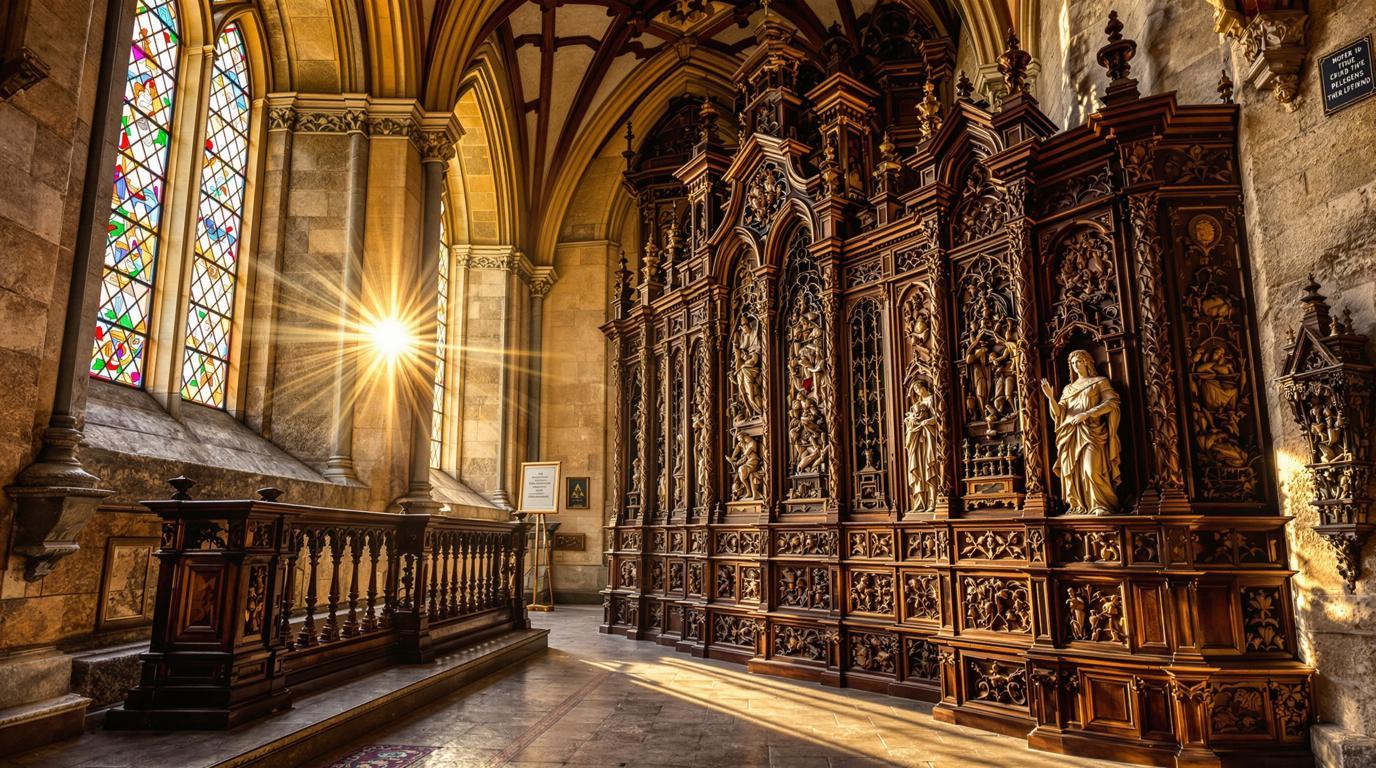The ancient village of Ahun rarely makes the typical French travel itinerary, yet this medieval treasure in central France offers a unique blend of history, artistry, and tranquility that rivals its more famous counterparts. Located in the verdant Creuse department of Nouvelle-Aquitaine, this small commune of barely 1,500 residents harbors centuries of fascinating history and unexpected artistic treasures that reward curious travelers.
A medieval gem with Roman roots
Founded during the Gallo-Roman period, Ahun (originally called Acitodunum) served as an important stopover on the Roman road connecting Lyon to Bordeaux. The village’s strategic position along the scenic Creuse River helped it flourish through the centuries, with its stone-built center preserving much of its medieval character.
Walking through its narrow streets feels like stepping through a living museum where modern life continues among structures dating back to the 13th century. Unlike other medieval French villages overrun with tourists, Ahun remains refreshingly authentic.
The abbey’s baroque masterpiece
The crown jewel of Ahun is undoubtedly the Abbey of Moutier d’Ahun, a former Benedictine monastery founded in 997. While the Romanesque church itself impresses, it’s the extraordinarily ornate 17th-century wooden choir that leaves visitors speechless.
“The baroque woodwork at Moutier d’Ahun is among the finest in France, yet so few international visitors know about it. Each carving tells a story—flowers, fruits, mythical creatures—all done with incredible precision,” explains Marie Rousseau, local historian.
These intricately carved wooden panels, created between 1673 and 1685, somehow survived both the French Revolution and centuries of wear, offering one of France’s most spectacular baroque treasures in this humble village setting.
Handcrafted paper and artistic legacy
Just steps from the abbey, visitors can experience another unique attraction—a traditional handmade paper workshop. Here, artisans continue centuries-old techniques, creating exquisite papers using methods little changed since medieval times.
The workshop offers hands-on demonstrations where visitors can try their hand at this ancient craft. It’s precisely these authentic experiences that make Ahun worth seeking out compared to more expensive luxury destinations in Europe.
Picturesque riverside views
The ancient Roman bridge spanning the Creuse River provides one of the most photogenic spots in the village. Early mornings often bring a mystical fog that drifts across the water, creating scenes worthy of a Monet painting.
“The light here changes everything throughout the day. Photographers come back again and again for the way the stone buildings reflect in the river at sunset,” notes Pierre Dumont, local photographer.
This picturesque setting rivals even France’s famous coastal scenes, yet remains blissfully uncrowded even during peak summer months.
Budget-friendly exploration
Visiting Ahun proves remarkably affordable compared to France’s more popular destinations. Local guesthouses offer authentic accommodations for under €70 per night, while excellent three-course meals featuring regional specialties can be found for €25.
This accessibility makes Ahun perfect for travelers who appreciate budget-friendly travel hacks without sacrificing authentic experiences.
A tranquil retreat from tourism
Perhaps Ahun’s greatest asset is its peaceful atmosphere. Unlike the bustling streets of Paris or the crowded beaches of popular island destinations, this village offers a genuine slice of French rural life.
“Visitors often tell me they came for a few hours but wish they’d planned to stay longer. There’s something magical about the pace of life here—it reminds people how to slow down and notice the beauty in small things,” says Jacques Moreau, local café owner.
For travelers seeking an authentic French experience away from the tourist trail, Ahun delivers something increasingly rare: a chance to discover an unspoiled destination where history, art, and natural beauty combine in perfect harmony.
